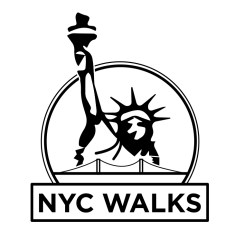Mayor Fiorello La Guardia
NYC Walks Blog 14 Mayor Fiorello La Guardia, NYC’s Greatest of the Twentieth Century Mayor © 2018 by Dr. Philip Ernest Schoenberg #ghost
New York’s most famous mayor was Henry Enrico Farewell La Giardia (1882-1947). He was the son of an Austrian Jewish mother and an Italian agnostic father, born at 177 Sullivan Street in Greenwich Village and brought up in the American West, where his father, Achille, was a bandmaster in the U.S. Army. He considered Prescott, Arizona where his father spent several years as the fort’s bandmaster to be his hometown.
He studied law at New York University, averaging in D’s, and was ad admitted to the bar in 1910. His youth spent on the wide western plains and deserts shaped his personal credo: You did not complain about pain, you did not give in to fear, you carried on like his a man; and his twenty years as an insurgent politician established his political style. The Stetson hat, a cowboy hat, became his trademark.
La Guardia was an immigration inspector in Trieste when it was the chief port of the Austrian-Hungarian Empire before World War I. He was responsible for requiring the steerage companies having a pre-boarding medical examination to reduce the number of rejected immigrants on Ellis Island. As an immigration inspector, he would not permit the ships to leave without this examination. Congress made this practice into a law by requiring the companies to return rejected immigrants at their expense. La Guardia did a stint as an immigration inspector on Ellis Island while working his way through NYU law school. His law school average was “D.”
One time when La Guardia ran for Congress on the Republican ticket on the Lower East Side, the Tammany Democrats put up a Jewish candidate and claimed La Guardia was anti-Semitic. La Guardia challenged his Jewish opponent to a debate in Yiddish. The Jewish candidate declined since he did not know the language.
La Guardia created a civil service commission to make civil serve mean something in New York City. He even received the examination questions himself. By placing the bulk of the civil service on the merit system, La Guardia, in one clean act, managed to destroy the basis of Tammany’s hegemony, the Irish patronage system. By insisting on an ethnically balanced ticket in 1934 , La Guardia broke forever the tradition for the straight Green ticket in both parties, and reaching into the newer ethnic neighborhoods for appointments, he gave these new groups the opportunity they craved.
La Guardia Airport opened in December 1939 as North Beach Airport, the first viable commercial airport in New York City. He publicized the need to build the airport when he refused to leave Newark Air Port because his ticket said “New York” on it. La Guardia’s Folly was opened on October 15, 1939, to become the busiest in the world, handling 200 fights a day.
On January 18, 1942, La Guardia initiated a series of Sunday “talks to the people,’ on municipal radio station WNYC, a free-form combination of fireside chat and cracker-barrel hour. For the rest of his mayoralty, La Guardia’s Sunday programs opened with Marine Hymn and the mayor’s favorite salutation, “patience and fortitude,” attracted as many as two million listeners turning to their mayor’s opinions on politics and life. He was frustrated by what he considered a hostile press and saw radio broadcasting as a means of reaching the people directly; in what became the best-remembered act of his mayoralty he gave a dramatic reading of the comic strip “Dick Tracy” during a newspaper strike on July 8, 1941. He served three four-year terms as mayor of New York City.
